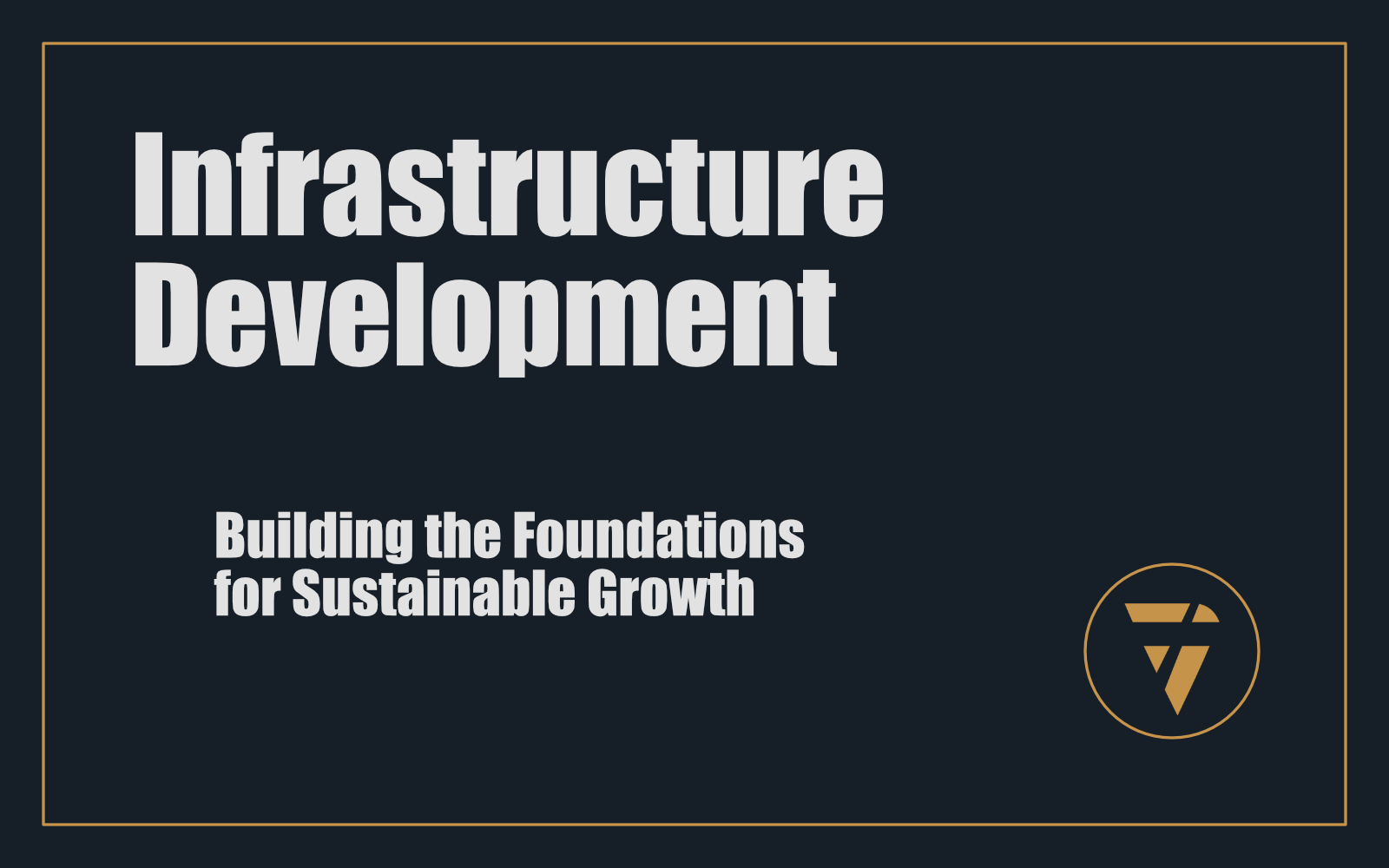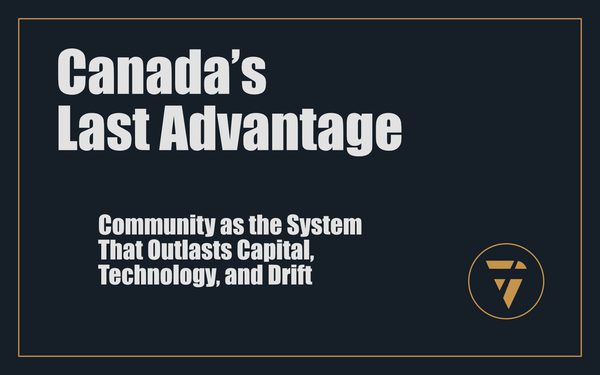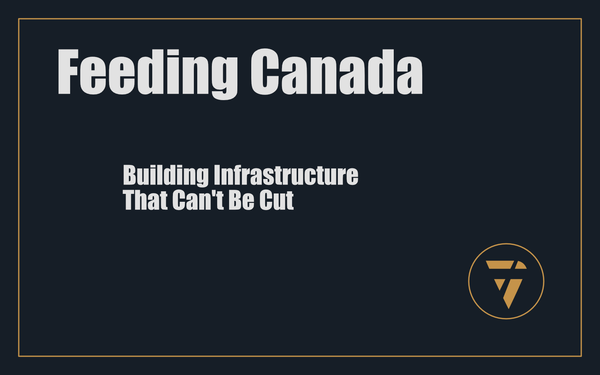Infrastructure Development

Building the Foundations for Sustainable Growth
Every thriving economy is built on a strong foundation of infrastructure. Roads, utilities, broadband, and transportation networks are not just conveniences; they are essential enablers of economic growth. Without them, businesses cannot operate efficiently, workers cannot commute easily, and communities struggle to attract investment.
Yet, in many rural and underserved regions, infrastructure remains outdated, underfunded, or nonexistent. Roads deteriorate, internet access is unreliable, and energy grids fail to meet modern demands. The result is a cycle of stagnation, businesses hesitate to invest, talent leaves for better-connected regions, and economic opportunities dry up.
Infrastructure is not just about construction projects, it's about creating economic resilience and long-term prosperity.
1. Why Roads, Utilities, and Broadband Are Critical to Business Attraction
Businesses thrive in well-connected, well-serviced environments. When essential infrastructure is lacking, growth becomes difficult, and economic opportunities vanish.
Roads and Transportation: The Arteries of Commerce
Efficient transportation networks are vital for business operations, supply chains, and workforce mobility. When roads, highways, and transit systems are underdeveloped, the entire economy suffers.
How Poor Transportation Infrastructure Limits Economic Growth
- Increased Costs for Businesses – Poor roads lead to higher shipping and logistics expenses, making local businesses less competitive.
- Reduced Workforce Access – Limited public transit or deteriorating roads make commuting difficult, shrinking the available talent pool.
- Investor Hesitation – Businesses avoid regions with weak transportation links due to supply chain disruptions and higher operational risks.
Communities that invest in modern, well-maintained transportation infrastructure increase business confidence, attract investment, and create jobs.
Utilities: The Foundation of Industry and Commerce
Reliable utilities—electricity, water, sewage, and energy—are fundamental for any business. Without them, expansion is impossible.
Challenges in Underserved Areas
- Aging electrical grids lead to power disruptions.
- Insufficient water and sewage capacity restrict industrial growth.
- High energy costs drive businesses to relocate.
Communities that prioritize modernized energy, water, and waste management systems become far more attractive to manufacturers, technology firms, and industrial investors.
Broadband and Digital Infrastructure: The Key to Economic Competitiveness
In today’s economy, digital connectivity is just as important as physical infrastructure. Without high-speed internet and reliable broadband networks, communities fall behind in nearly every sector.
The Economic Risks of Poor Broadband Access
- Remote work and digital business growth are impossible.
- E-commerce, online education, and telehealth remain inaccessible.
- Tech-driven industries refuse to invest in regions without reliable connectivity.
Bringing modern broadband networks to rural and underserved areas is one of the highest-return infrastructure investments a community can make.
2. Strategies for Funding and Implementing Infrastructure Projects
Infrastructure development requires significant capital and long-term planning. Many communities struggle with funding, slow approvals, and bureaucratic delays. However, successful regions use innovative funding strategies and structured implementation plans to move projects forward.
Funding Infrastructure: Where Does the Money Come From?
Communities that rely solely on municipal budgets and government grants often struggle to secure the funds needed for large-scale infrastructure projects. Instead, successful projects combine multiple funding sources:
Public-Private Partnerships (PPPs)
- Joint ventures between municipal governments and private investors to develop and operate infrastructure.
- Reduces the financial burden on public funds while ensuring long-term sustainability.
Government Grants and Subsidies
- Federal and provincial programs provide targeted funding for transportation, energy, and broadband projects.
- Many grants require matching funds, making additional investment sources necessary.
Infrastructure Bonds
- Communities issue municipal or regional bonds to finance large-scale projects.
- Investors receive long-term returns while helping fund essential development.
Corporate Investment and Utility Partnerships
- Businesses with infrastructure needs co-invest in projects that benefit them and the community.
- Large energy companies, broadband providers, and logistics firms often fund infrastructure expansions in exchange for long-term operational agreements.
Implementing Infrastructure Projects Efficiently
Even when funding is secured, delays and inefficiencies can derail projects. Successful communities follow structured development models:
1. Prioritization and Feasibility Studies
- Infrastructure projects must be ranked based on economic impact, cost, and feasibility.
- Feasibility studies ensure projects are financially and technically viable before major investments are made.
2. Regional Collaboration
- Many small municipalities lack the capacity to develop large-scale infrastructure alone.
- Regional partnerships allow multiple communities to share costs and resources, making projects more viable.
3. Phased Implementation
- Large projects should be divided into manageable phases to spread out costs and avoid delays.
- This allows communities to start with high-impact areas and scale over time.
Start here:

3. How MEDA Navigates Regulatory Challenges to Get Projects Moving
One of the biggest barriers to infrastructure development is navigating government regulations, permits, and approvals. Many projects stall for years due to bureaucratic roadblocks.
Regulatory Challenges in Infrastructure Development
- Environmental impact assessments slow down approvals.
- Land use and zoning restrictions limit project scope.
- Lengthy permit processes create uncertainty for investors.
Manitou Economic Development Agency (MEDA) specializes in breaking through these barriers by:
1. Streamlining Government Approvals
- MEDA works directly with municipal, provincial, and federal agencies to expedite permit processing.
- Regulatory specialists ensure that projects meet compliance standards without unnecessary delays.
2. Structuring Public-Private Agreements
- MEDA acts as a liaison between government bodies and private investors, ensuring both parties benefit from infrastructure projects.
- Legal and financial expertise simplifies negotiations and contract development.
3. Securing Multi-Source Funding for Projects
- By leveraging grants, private capital, and municipal funding, MEDA ensures that infrastructure projects are fully financed and financially sustainable.
4. Managing Project Execution and Oversight
- MEDA provides direct project management support to ensure timelines and budgets are met.
- Works with engineering firms, construction teams, and logistics providers to keep projects moving efficiently.
Infrastructure is the Catalyst for Economic Growth
Without modern infrastructure, businesses struggle, communities decline, and economic opportunities disappear. Roads, utilities, and broadband are not luxuries, they are necessities.
Communities that prioritize infrastructure investment set themselves up for long-term prosperity, business expansion, and workforce retention. However, securing funding, overcoming regulatory hurdles, and ensuring timely implementation requires strategic planning, collaboration, and expert guidance.
Manitou Economic Development Agency provides the expertise, connections, and leadership needed to turn infrastructure visions into reality. By leveraging innovative funding models, streamlining regulatory processes, and managing project execution, MEDA ensures that communities are built for growth, stability, and long-term success.
The communities that invest in infrastructure today will be the ones that lead the economy tomorrow. Are you ready to build?
This is what I’m working on. Tell me what you think, I enjoy the conversation! Subscribe and follow the work in real time.
Thanks!
B

No roads, no business. No broadband, no growth. No infrastructure, no future. Economic success starts with the foundations we build today. Communities that invest in infrastructure attract investment, create jobs, and stay competitive. Who’s ready to build?
PS -







